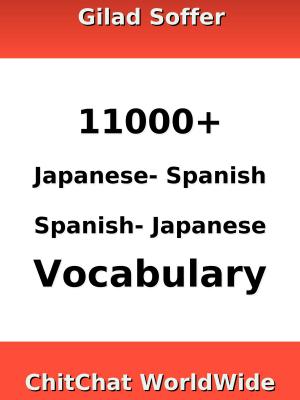Wood and Woody in Chinese Kanji: Debunking Confusion
Nonfiction, Reference & Language, Foreign Languages, Japanese| Author: | Registered Members of debunKanji.com | ISBN: | 9781370836802 |
| Publisher: | Registered Members of debunKanji.com | Publication: | July 22, 2017 |
| Imprint: | Smashwords Edition | Language: | English |
| Author: | Registered Members of debunKanji.com |
| ISBN: | 9781370836802 |
| Publisher: | Registered Members of debunKanji.com |
| Publication: | July 22, 2017 |
| Imprint: | Smashwords Edition |
| Language: | English |
A reference for Chinese kanji glyphs used in the Japanese language using elements referring to wood and woodies, with pronunciations in both kana and romaji, definitions published by external sources, vocabulary examples and stroke count, with grade and JLPT levels. Each glyph includes its comprising elements, hyperlinks to other glyphs in which it appears, and related glyphs.
Exploring the fundamentals of Chinese kanji glyphs used in the Japanese language referring to wood and woodies, derived as an abridged listing from over 13,500 glyphs; JIS pronunciations displayed in both kana syllabaries and romaji; meanings published by Japanese, Chinese, and Unicode external sources for comparison; vocabulary examples from Japanese and Chinese selected from over 375,000 dictionary entries; stroke count, Japanese grade level, Japanese Language Proficiency Test level; display of glyph using Ming Liu, Mincho, and Gothic fonts; pronunciation when used in names; and mouseover display of pronunciation, given meanings, and description of glyph elements.
Each glyph includes elements comprising the glyph with various combinations, other glyphs in which the entry appears as an element, similar and related glyphs by meaning or usage, and compound glyphs used in vocabulary.
Have you ever wondered what each individual part means within a kanji glyph? Or, why meanings listed in dictionaries for each element often make no sense when combined, seemingly unrelated to the glyph as a whole?
Did the ancient Chinese sages who designed kanji know exactly what they were doing, or, do the individual strokes have no meaning as the pundits claim today? Is it even possible that 9/10 of 47,000 glyphs were created in China for pronunciation only and not for meaning?
The how and why behind the creation of Chinese glyphs generally have been forgotten, and along with it the individual elements which comprise each glyph forming meanings as an integrated whole. As modern society evolved, fundamental meanings behind the glyphs became toxic and needed to be disguised, attempting to hide the past behavior of humans graphically depicted within these ancient glyphs. This is an area where most students do not want to go, not daring to venture into the bowels of the beast—it is nevertheless, the ugly truth, with the problem being that these glyphs are so outrageous, most people from their modern moral perspective no longer can believe the meanings of the integrated elements.
A reference for Chinese kanji glyphs used in the Japanese language using elements referring to wood and woodies, with pronunciations in both kana and romaji, definitions published by external sources, vocabulary examples and stroke count, with grade and JLPT levels. Each glyph includes its comprising elements, hyperlinks to other glyphs in which it appears, and related glyphs.
Exploring the fundamentals of Chinese kanji glyphs used in the Japanese language referring to wood and woodies, derived as an abridged listing from over 13,500 glyphs; JIS pronunciations displayed in both kana syllabaries and romaji; meanings published by Japanese, Chinese, and Unicode external sources for comparison; vocabulary examples from Japanese and Chinese selected from over 375,000 dictionary entries; stroke count, Japanese grade level, Japanese Language Proficiency Test level; display of glyph using Ming Liu, Mincho, and Gothic fonts; pronunciation when used in names; and mouseover display of pronunciation, given meanings, and description of glyph elements.
Each glyph includes elements comprising the glyph with various combinations, other glyphs in which the entry appears as an element, similar and related glyphs by meaning or usage, and compound glyphs used in vocabulary.
Have you ever wondered what each individual part means within a kanji glyph? Or, why meanings listed in dictionaries for each element often make no sense when combined, seemingly unrelated to the glyph as a whole?
Did the ancient Chinese sages who designed kanji know exactly what they were doing, or, do the individual strokes have no meaning as the pundits claim today? Is it even possible that 9/10 of 47,000 glyphs were created in China for pronunciation only and not for meaning?
The how and why behind the creation of Chinese glyphs generally have been forgotten, and along with it the individual elements which comprise each glyph forming meanings as an integrated whole. As modern society evolved, fundamental meanings behind the glyphs became toxic and needed to be disguised, attempting to hide the past behavior of humans graphically depicted within these ancient glyphs. This is an area where most students do not want to go, not daring to venture into the bowels of the beast—it is nevertheless, the ugly truth, with the problem being that these glyphs are so outrageous, most people from their modern moral perspective no longer can believe the meanings of the integrated elements.















